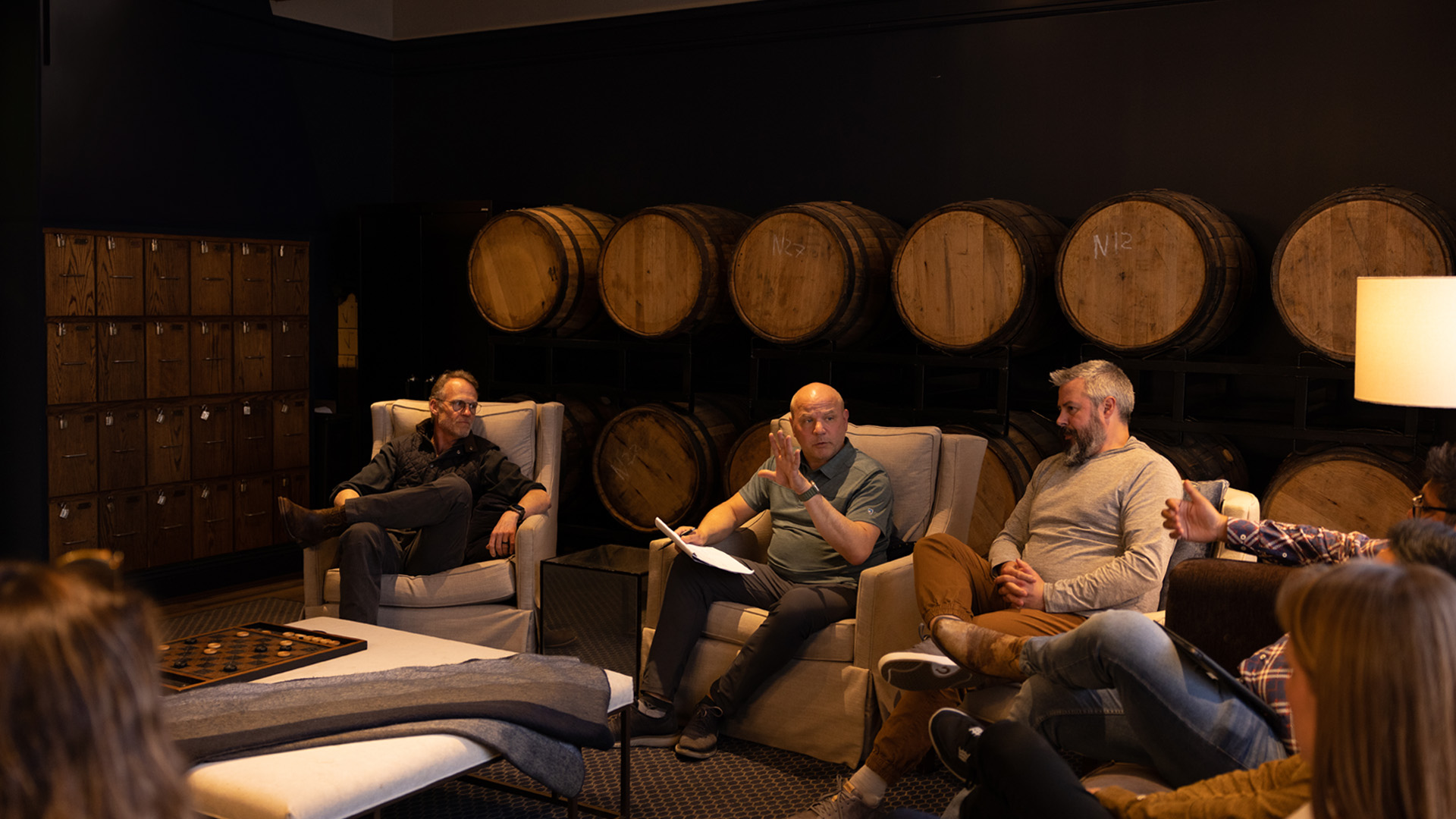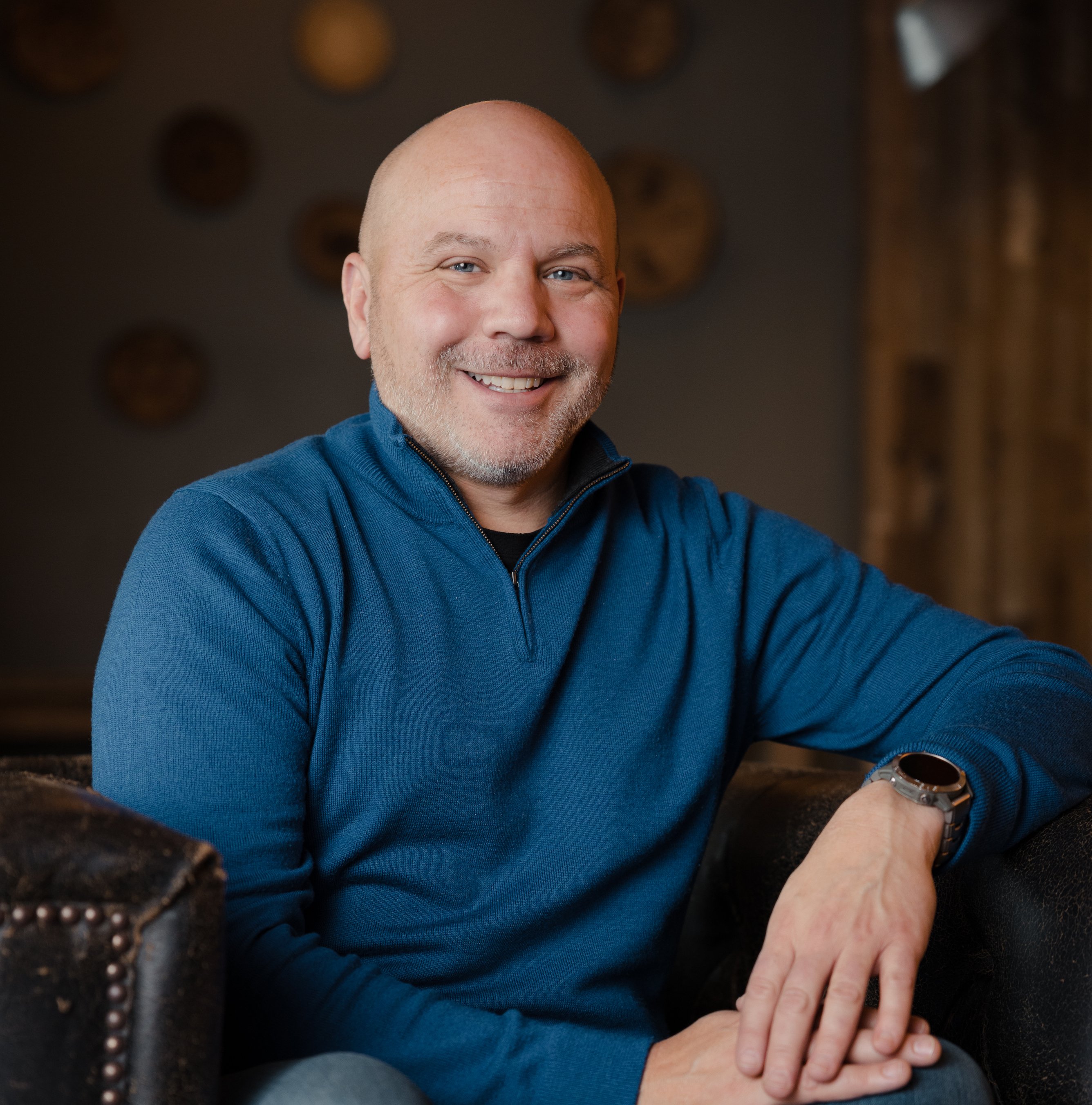What Is a Business Visionary? Decoded: Roles, Responsibilities, and Insights
Why do people choose to become entrepreneurs? For some, it’s a passion for a problem they believe must be solved, while for others, it’s the pull toward an industry gap that should be solved since those particular entrepreneurs envision a different future. My business partner Jeffrey has another take.
On his podcast Lay of the Land, Jeffrey posed that very question to more than 100 entrepreneurs. In a recent episode, he shares 4 tenets or reasons people decide to take the risk of starting a business — agency, autonomy, culture, and impact.
To be successful, the entrepreneur will need to have relentless focus, be able to emotionally survive rejection, embrace euphoric highs and devastating lows, and be prepared for the high probability of failure.
More than aspiring business owners, all of these people are Visionaries.
Visionaries are the game-changers, the disruptors who consistently exhibit the courage of their convictions as they help propel startups through the early stages of business development. In Rocket Fuel, Gino Wickman shares that 3% of the population fits the Visionary profile… and they create two-thirds of the new jobs in the economy.
In this article, we'll highlight the unique traits and pivotal roles of a Visionary. And we’ll show how EOS® Powered by Ninety can elevate a Visionary’s approach.
Key Points:
- Gain a clear definition and understanding of what a Visionary is within the EOS framework, including the Visionary’s role and responsibilities.
- Discover the distinctive qualities that set a Visionary apart from other leadership roles.
- Learn about the mindset, traits, and habits that successful Visionaries possess.
- Understand the challenges that Visionaries often face and the strategies used to overcome them.
What Is a Visionary in EOS?
Some people excel at living in the moment, fully capable of handling anything that is directly in front of them. Every company needs those people.
A Visionary, on the other hand, excels at big-picture thinking. Rather than thinking about solving today’s problems or tackling next week’s opportunities, the Visionary takes a 40,000-foot view, thinking 5–15 years in the future all the time.
In the world of EOS, the Visionary sits at the top of The Accountability Chart™. They are often supported by an Integrator, who helps facilitate more of the day-to-day and week-to-week activities that keep the business humming. The EOS Visionary is likely the founder or CEO of the company, a person who is brimming with creative ideas but sometimes easily distracted by shiny objects that could derail the best-laid plans.
We’ll dive into the Visionary/Integrator relationship in a bit, but first, let’s have a look at some of the qualities most Visionaries possess.
Distinctive Visionary Qualities
As noted above, imagination and creativity sit atop the list of characteristics you’ll find with most Visionaries. The ability to see what others cannot yet see is what allows them to think — and plan — years ahead. Those dreams and plans are memorialized in your V/TO® on the Ninety platform. This allows everyone in the organization to clearly see the vision for the future and what needs to happen now to help realize it.
"Vision is the ability to talk about the future with such clarity it is as if we are talking about the past."
— Simon Sinek, business leadership author and speaker
Here are some of the more notable characteristics you’ll find in a Visionary:
- Passion: Ideas for the future remain just that — ideas — if you’re not passionate about them. Visionaries provide passion and inspire others to connect and align with their cause.
- Courage: Taking risks and fully embracing the unknown requires the resolve and courage to challenge convention in the name of creating something better. I’ve yet to see a Visionary lack courage; it’s just part of who they are.
- Learner: Visionaries are lifelong learners. This is not an exercise in academia. It is more "research" than "development." They know their target market and have a clear pulse on it. They read constantly and engage in growth-minded learning opportunities via entrepreneurial peer groups — such as EO, YPO, and Vistage, among others.
- Big-Picture Thinking: If given a choice, Visionaries live in the 5-, 10-, and 15-year focus mentioned earlier. They love big problems. They literally fall in love with the problem more than the solution. While the focus is on the future, understanding the implications of those big ideas in the short term is crucial for everything to fit neatly together.
- Deal Closer: The Visionary needs to convince the customer/client that their solution is the right solution. They are competitive and want to win, and because they love the problem, they’re committed to finding a solution the customer will buy. Often, for years into the build of the business, it’s the Visionary — not the Head of Sales — that closes the big deals.
Roles and Responsibilities of a Visionary
The biggest role a Visionary plays is setting the strategic direction for an organization. All that big-picture thinking leads to identifying and prioritizing the strategic objectives that are most important to realizing the vision. This work is done, of course, collaboratively with a senior leadership team. The same holds true for establishing the core values, one of the primary filters used to keep organizations on track to turn their vision into reality.
Establishing strategic relationships is another role you’ll find many Visionaries playing on a regular basis. With a (hopefully) solid culture established for their organization, aligning with other brands or ideal stakeholders who can share and support a vision is key to sustaining success as the organization moves through its stages of development.
Another key area of focus for the Visionary includes identifying market opportunities and threats, often represented in a SWOT (analysis of Strengths, Weaknesses, Opportunities, and Threats). This helps crystalize the areas in which you excel — and the places where you have room for growth — so you can not only remain competitive in your market sector but also endure and thrive for years to come.
Again, that long-term vision comes into play here, as Visionaries are able to spot trends before others and deftly move in that direction when it makes sense. They’re also adept at anticipating potential challenges (such as economic conditions or evolving technologies) and shaping strategies to effectively counter such challenges.
Here are a few more responsibilities of many Visionaries:
Inspiring and Motivating Teams
- Visionaries serve to inspire employees at all levels, energizing the entire organization.
- They communicate the company's vision in a compelling manner. In EOS, we call this Shared by All (SBA), and it’s an important concept that is accomplished through the EOS Meeting Pulse.
- They foster a culture of innovation and continuous improvement, championing the idea that everyone strives to be the best version of themselves.
Collaborating with Other Key Roles
- Visionaries work closely with Integrators to ensure the effective execution of their vision.
- They build a cohesive leadership team that shares the Visionary's commitment to the company's future.
- They learn to “let go” of day-to-day operations and continuously seek ways to do the work that drives the company forward.
Driving Innovation
- Visionaries champion new ideas and approaches and see “business as usual” as a ceiling meant to be broken through.
- They lead new initiatives with a growth mindset, as learning is a required part of growing.
- They create an environment where creativity not only thrives but is rewarded.
Building a Visionary Culture
- Visionaries promote open-mindedness and adaptability within the organization.
- They foster a culture where innovative ideas are welcomed and explored.
- They ensure the company's vision is integrated into daily operations and decision-making.
Challenges Faced by Visionaries
Now, for all the great traits that Visionaries possess, some challenges test the best of us, and Visionaries are certainly no exception.
Your strengths, when unchecked, can become weaknesses. Said another way, “Big Ideas” are required, but staying focused is a must as well. While passion is a core attribute, it can create what Gino Wickman calls “organizational whiplash” — when the Visionary becomes inspired and introduces the next idea too quickly, before carefully considering the previous goals.
This is why we love the concept of the 90-Day World® and encourage the focus filter approach of Long-Term Issues and then setting Rocks every quarter.
The potential challenges within an organization are best navigated when there is balance and harmony in support of the Visionary. Balancing visionary ideas with practical business needs is a challenge unto itself… and it’s one the EOS framework is built to solve, in part, through the role of the Integrator.
The Visionary and Integrator Partnership
If you recall, we did a previous blog on the role of an Integrator. To summarize, the Integrator is the Yin to the Visionary's Yang. In most companies, the Integrator is a President, COO, General Manager, or Chief of Staff. I always encourage leaders to think of the Visionary seat as one whose primary function is to work "on" the business, and the Integrator’s focus is to work "in" the business.
Helpful Hint: If you wonder whether you’re a Visionary or an Integrator, you can take the EOS Rocket Fuel Crystallizer Assessment to find out.
My experience has been that you know when you’re high on the Visionary scale, but many Visionaries developed Integrator skills when they began their business-building journey. When it’s time to scale their business, the challenge is being able — and ready — to let go and empower another person.
Together, the Visionary and Integrator can balance each other out, allowing for the 40,000-foot view for tomorrow with the 90-Day World the rest of us need to excel in each day. This relationship, built on collaboration and trust between the two (as well as with a senior leadership team), drives both business stability and growth. The Integrator helps execute the vision and plan by removing the obstacles that would otherwise derail things.
Dave Payne is a big Visionary. His Integrator is Dean Tompkins, and together, they have exponentially grown their home restoration business, Payne and Tompkins. Below is one of my favorite quotes from Dave’s endorsement of Running on EOS™ Powered by Ninety and their commitment to discipline, which makes the EOS tools come alive through Ninety.
“We use Ninety for everything EOS related… it's open on all our teammates' computers… and it's critical to our implementation and focus.”
— Dave Payne, Visionary
Watch Dave's entire testimonial video below:
Unlock Your Visionary Potential
Most businesses don’t succeed with the same vision they start with. Refining, sharing, and focusing on gaining traction is essential to success. Running on EOS Powered by Ninety’s cloud-based platform helps Visionaries share future goals and actionable insights throughout the organization, leading to tangible results you’ll consistently see in a 90-Day World.
More than 11,000 companies and over 157,000 people use Ninety to help them achieve their true potential, attain collective clarity, and experience the power of harmony.
Ready to focus on your established agreements, align by enabling accountability across the organization, and thrive by empowering all your teams? Start your free trial today.





